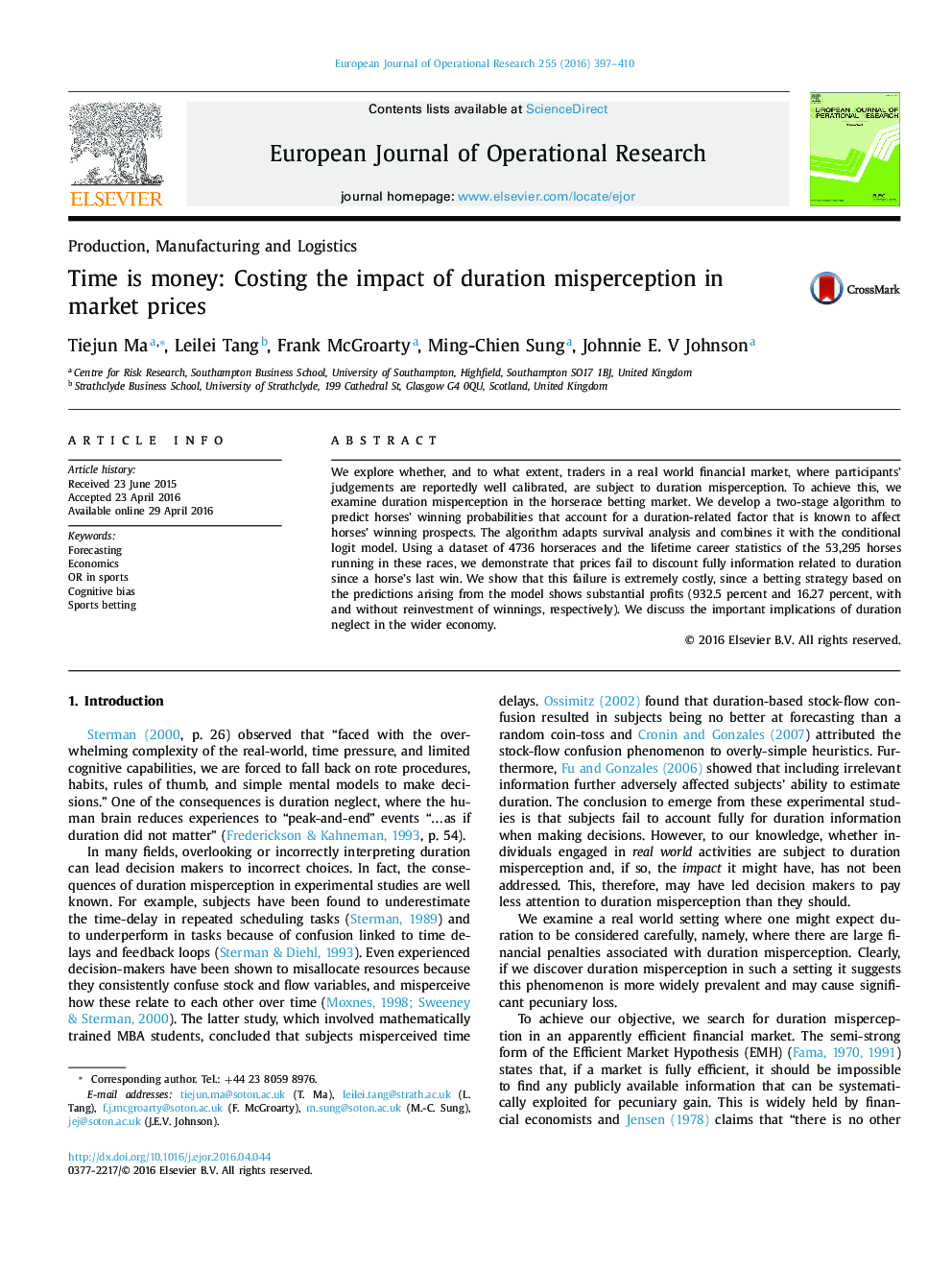| Article ID | Journal | Published Year | Pages | File Type |
|---|---|---|---|---|
| 479196 | European Journal of Operational Research | 2016 | 14 Pages |
•Demonstrate existence of duration misperception in a real-world environment.•Develop a 2-stage forecasting model combining survival analysis and conditional logit.•Employ survival analysis to study pricing efficiency in a speculative market.•Evaluate the economic costs of duration misperception in a financial market.
We explore whether, and to what extent, traders in a real world financial market, where participants’ judgements are reportedly well calibrated, are subject to duration misperception. To achieve this, we examine duration misperception in the horserace betting market. We develop a two-stage algorithm to predict horses’ winning probabilities that account for a duration-related factor that is known to affect horses’ winning prospects. The algorithm adapts survival analysis and combines it with the conditional logit model. Using a dataset of 4736 horseraces and the lifetime career statistics of the 53,295 horses running in these races, we demonstrate that prices fail to discount fully information related to duration since a horse's last win. We show that this failure is extremely costly, since a betting strategy based on the predictions arising from the model shows substantial profits (932.5 percent and 16.27 percent, with and without reinvestment of winnings, respectively). We discuss the important implications of duration neglect in the wider economy.
